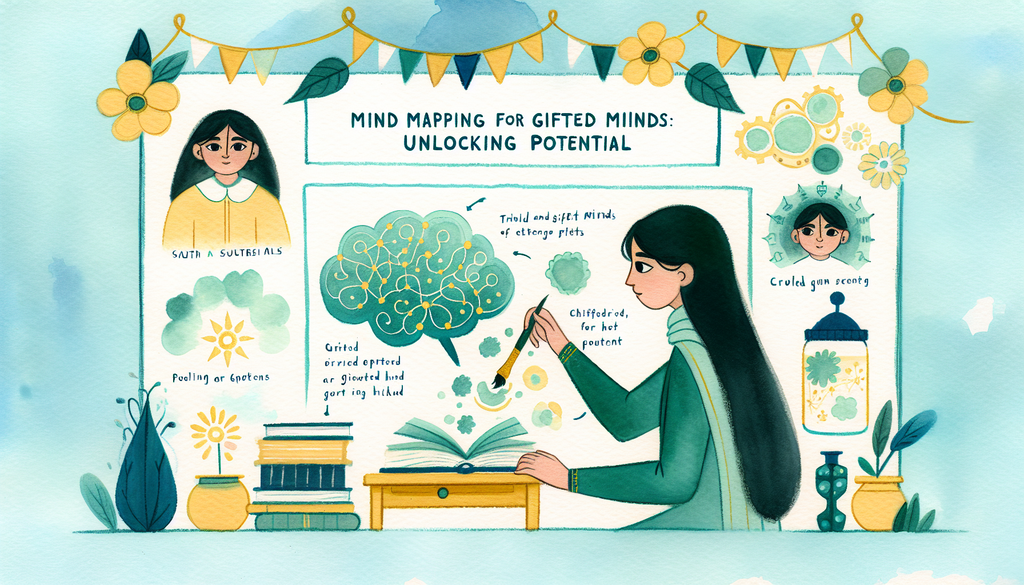Mind Mapping for Gifted Minds: Unlocking Potential

With the right tools and techniques, the unique potential of gifted learners can fully thrive. One such tool that’s proven to be both effective and engaging is mind mapping. This powerful tool can positively stimulate and enhance learning experiences, especially for gifted students. It organizes thoughts, improves memory, and fosters creative thinking. Let’s delve into how mind mapping can be beneficial for gifted children and how you can incorporate it into their education.
Understanding Your Gifted Child
Giftedness often comes with a unique perspective of seeing and interacting with the world. These children perceive things at a deeper level and are driven by their innate curiosity and thirst for knowledge. They are often intense and sensitive, have a high level of awareness, and possess the ability to quickly and easily make connections between pieces of information that seem unrelated to others (Giftedness Unwrapped: Identifying Your Child’s Strengths).
The Power and Potential of Mind Mapping
Mind mapping is an effective learning tool that enhances memory and encourages active learning. By representing ideas visually, a mind map can help learners explore connections between concepts in a fun and interactive manner. It also promotes critical thinking, creativity, and organization skills which are significant in the holistic development of the gifted child (Inside the Mind of a Gifted Child: Understanding Asynchronous Development).
Being visual and intuitive, mind maps can be adapted to suit a wide range of topics and tasks. For instance, they can be used for brainstorming, note-taking, problem-solving, memory retention, and organizing complex ideas. Imaginative and artistic gifted students might particularly enjoy the artistic attributes of mind mapping and find this an engaging way to express and develop their ideas.
How to Introduce Mind Mapping to Your Gifted Child
Start by showing your child examples of mind maps, explaining what each part represents. Then, begin with a simple mind mapping exercise, like mapping out the plot of a favorite book or an outline for a project. Remember, it should be fun; spark creativity by using colors, symbols, or illustrations.
Gradually introduce them to more complex mind-mapping activities involving deeper cognitive processes, such as connecting concepts from different subjects or idea synthesis. Analogously, software applications could be explored in parallel, particularly for tech-savvy learners, to engage them more effectively (Digital Literacy for the 21st Century Learner).
Balancing Support and Challenge
It’s essential to strike a balance between challenging and supporting gifted learners. By learning how to use mind mapping effectively, they can self-direct their learning journey, allowing them to delve deeper into topics that interest them, at their pace (Balancing Challenge and Support for Gifted Learners at School).
Conclusion
Equip your gifted children with this powerful tool; help them explore their thoughts, organize their world, and let their imagination soar to new heights. With mind mapping, the sky is indeed the limit for these young gifted minds, nurturing their unique potential to flourish in all its glory. For further advice on helping your gifted child thrive, you can explore other resources such as From Playgrounds to Politics: Advocating for Your Gifted Child and Future Forecasting: Long-Term Planning for Your Gifted Child.